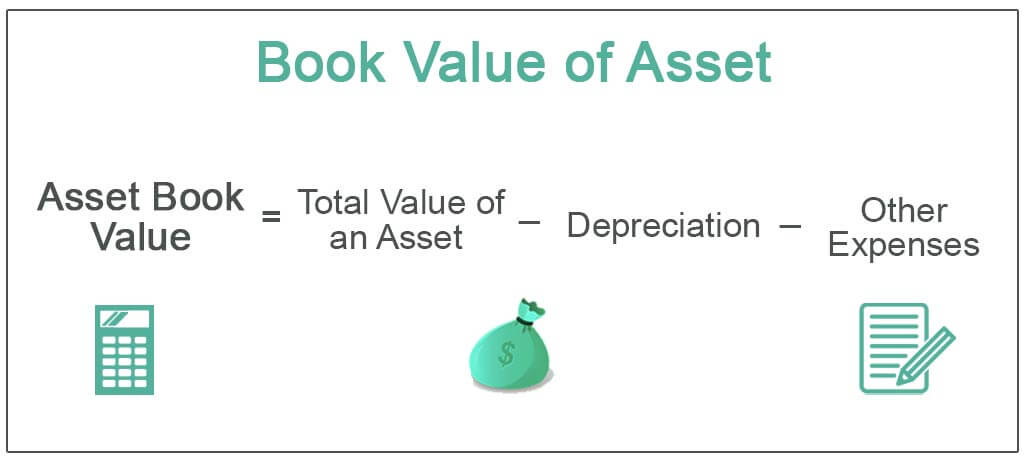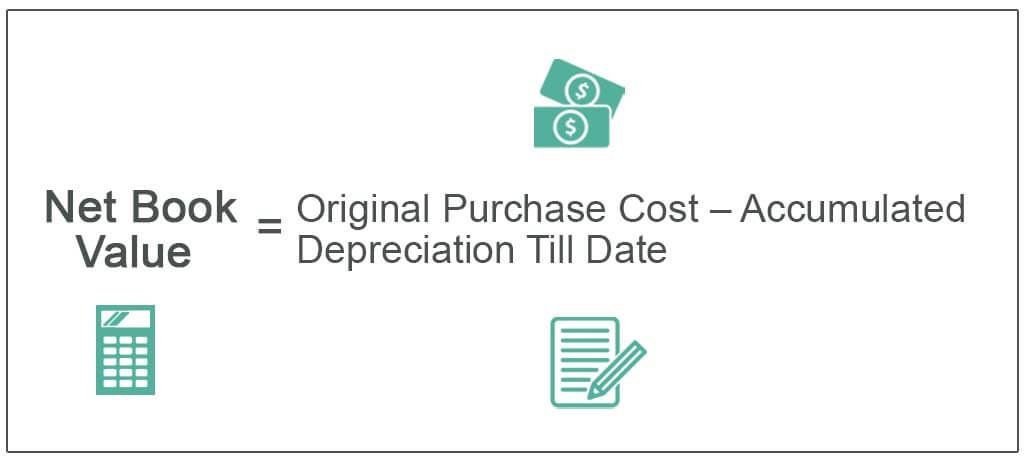Depreciation Book Value Formula
Total Depreciation Expense 2 Straight Line Depreciation Percentage Book Value Relevance and Uses of Depreciation Expenses Formula. Total Depreciation Cost Cost of asset Salvage Value 10000 2000 8000.

Book Value Of Assets Definition Formula Calculation With Examples
In subsequent years youll apply that rate of depreciation to the assets remaining book value rather than its original cost.

. Yearly depreciation to be booked under Statement of Profit Loss will be 10000 x 10 1000 annum. It does not have anything to do with the market value of the asset. Thus annual depreciation cost Cost of asset Salvage CostUseful Life 80008 1000.
You can calculate this figure by taking its original cost and subtracting its original cost minus the depreciation it has accumulated to date. For this approach in the first year you depreciate an asset you take double the amount youd take under the straight-line method. The book value is used for accounting and calculations.
Annual Depreciation expense 100000-20000 10 Rs. Straight-line depreciation method can be calculated using the following formula. 2 x straight-line depreciation rate x book value at the beginning of the year How it works.
Hence the Company will depreciate the machine. Example of straight-line depreciation without the salvage value. Once youve calculated the straight-line depreciation rate you can find the remaining book value of the asset.
Under this method we charge a fixed percentage of depreciation on the reducing balance of the asset. Depreciation fracCost of asset Residual valueUseful life Rate of depreciation fracAmount of depreciationOriginal cost of asset x 100. Figure out the assets accumulated depreciation at the end of the last reporting period.
The book value is the assets cost minus. Example Suppose a manufacturing company purchases machinery for Rs. 8000 as the depreciation expense every year over the next ten years as shown in the.
Book Value on a Balance Sheet. The book value shown on the balance sheet is the book value for all assets in that specific category. The rate of depreciation is 10 Written Down Value Method.
The double declining balance depreciation method is one of two common methods a business uses to account for the expense of a long-lived asset. The book value at the end of 5 years of depreciation is denoted BV 5. Annual depreciation expense 60000 - 10000 50000.
A businesss assets are listed on one side of the balance sheet. Assets that have book value are those that are depreciated. Diminishing balance or Written down value or Reducing balance Method.
The company takes 50000 as the depreciation expense every year for the next 5 years. The book value of equity or Shareholders Equity is the amount of cash remaining once a companys assets have been sold off and if existing liabilities were paid down with the sale proceeds. They are listed in order of liquidity how quickly they can be turned into cash.
Depreciation Asset Cost Residual Value Life-Time Production Units Produced. If the computer depreciates at a rate of 16 each year after two years the remaining book value of the computer is 59020. Double Declining Balance Depreciation Method.
Double-Declining Method Depreciation Double-Declining Depreciation Formula To implement the double-declining depreciation formula for an Asset you need to know the assets purchase price and its useful life. Book value is the. Salvage Value 2000.
Or you can use a double-declining calculator. Purchased office furniture like tables and chairs worth 10000. A depreciation factor of 200 of straight line depreciation or 2 is most commonly called the Double Declining Balance MethodUse this calculator for example for depreciation rates entered as 15 for 150 175 for 175 2 for 200 3 for 300 etc.
100000 and the useful life of the machinery are 10 years and the residual value of the machinery is Rs. After having all the values in hand we can apply the values in the below formula to get the depreciation amount. This means that if a company XYZ is to purchase company ABC then it will have to shell 50 million out of its pocket the actual book value of buying company ABC.
Thus the company can take Rs. The annual depreciation is multiplied by the number of years the asset was depreciated resulting in total depreciation. The original purchase price is subtracted from the total depreciation expensed across the useful life.
Learn how to use book and market value to uncover profitable stocks. The following additional steps can be used to derive the formula for depreciation under the double-declining balance method. 2 x Single-line depreciation rate x Book value at beginning of the year.
And its total liabilities amounting to 450 million the firms book value would be 50 million by deducting the value of liabilities from that of assets. Book value Cost of the Asset Accumulated Depreciation. Calculate yearly depreciation to be booked by Mark.
Book value and market value are key to finding stocks with high growth potential. Calculating the salvage value is a two-step process. Use this calculator to calculate an accelerated depreciation of an asset for a specified period.
In the declining balance depreciation method the book value at the end of the depreciation period does not equal the salvage value. The useful life of the asset 8 years. Applying the formula So the manufacturing company will depreciate the machinery with the amount of 10000 annually for 5 years.
To calculate the book value of equity of a company the first step is to collect the required balance sheet data from the companys latest financial reports. First Divide 100 by the number of years in the assets useful life this is your straight-line depreciation rate. Book Value of Equity Formula.
Written Down Value Method Example 2.

How To Calculate Book Value 13 Steps With Pictures Wikihow

How To Calculate Book Value 13 Steps With Pictures Wikihow

How To Calculate Book Value 13 Steps With Pictures Wikihow

Net Book Value Meaning Formula Calculate Net Book Value

How To Calculate Book Value 13 Steps With Pictures Wikihow

Depreciation And Book Value Calculations Youtube
0 Response to "Depreciation Book Value Formula"
Post a Comment